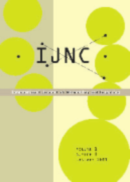10 巻, 2 号
選択された号の論文の18件中1~18を表示しています
- |<
- <
- 1
- >
- >|
Special Issue on the Seventh International Symposium on Computing and Networking
-
2020 年10 巻2 号 p. 61
発行日: 2020年
公開日: 2020/07/20
PDF形式でダウンロード (44K) -
2020 年10 巻2 号 p. 62-83
発行日: 2020年
公開日: 2020/07/20
PDF形式でダウンロード (820K) -
2020 年10 巻2 号 p. 84-93
発行日: 2020年
公開日: 2020/07/20
PDF形式でダウンロード (373K) -
2020 年10 巻2 号 p. 94-110
発行日: 2020年
公開日: 2020/07/20
PDF形式でダウンロード (1759K) -
2020 年10 巻2 号 p. 111-126
発行日: 2020年
公開日: 2020/07/20
PDF形式でダウンロード (2078K) -
2020 年10 巻2 号 p. 127-143
発行日: 2020年
公開日: 2020/07/20
PDF形式でダウンロード (1606K) -
2020 年10 巻2 号 p. 144-158
発行日: 2020年
公開日: 2020/07/20
PDF形式でダウンロード (1187K) -
2020 年10 巻2 号 p. 159-173
発行日: 2020年
公開日: 2020/07/20
PDF形式でダウンロード (588K) -
2020 年10 巻2 号 p. 174-188
発行日: 2020年
公開日: 2020/07/20
PDF形式でダウンロード (456K) -
2020 年10 巻2 号 p. 189-199
発行日: 2020年
公開日: 2020/07/20
PDF形式でダウンロード (850K) -
2020 年10 巻2 号 p. 200-212
発行日: 2020年
公開日: 2020/07/20
PDF形式でダウンロード (1274K) -
2020 年10 巻2 号 p. 213-226
発行日: 2020年
公開日: 2020/07/20
PDF形式でダウンロード (406K) -
2020 年10 巻2 号 p. 227-241
発行日: 2020年
公開日: 2020/07/20
PDF形式でダウンロード (222K) -
2020 年10 巻2 号 p. 242-258
発行日: 2020年
公開日: 2020/07/20
PDF形式でダウンロード (892K) -
2020 年10 巻2 号 p. 259-276
発行日: 2020年
公開日: 2020/07/20
PDF形式でダウンロード (3371K) -
2020 年10 巻2 号 p. 277-292
発行日: 2020年
公開日: 2020/07/20
PDF形式でダウンロード (149K) -
2020 年10 巻2 号 p. 293-307
発行日: 2020年
公開日: 2020/07/20
PDF形式でダウンロード (1125K) -
2020 年10 巻2 号 p. 308-324
発行日: 2020年
公開日: 2020/07/20
PDF形式でダウンロード (416K)
- |<
- <
- 1
- >
- >|
